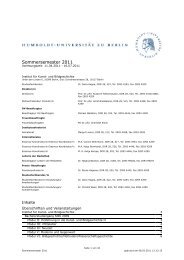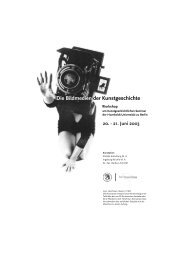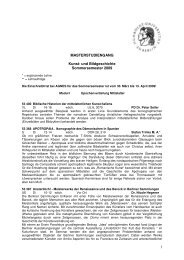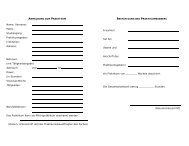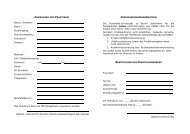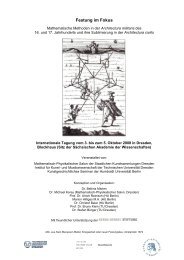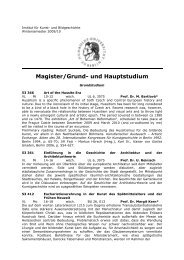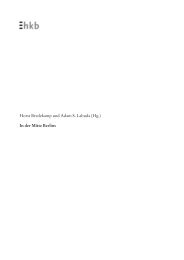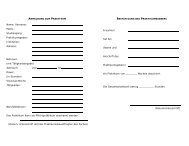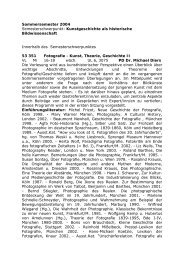Bauhaus Construct - Institut für Kunst
Bauhaus Construct - Institut für Kunst
Bauhaus Construct - Institut für Kunst
Create successful ePaper yourself
Turn your PDF publications into a flip-book with our unique Google optimized e-Paper software.
The Irreproducibility of the <strong>Bauhaus</strong> Object<br />
painting—and Gropius’s ideal of working closely with manufacturers never<br />
materialized. 50 Only three firms began negotiations during his tenure; the<br />
rest came during that of his successors, mainly Hannes Meyer.<br />
Practically speaking, <strong>Bauhaus</strong> objects were not mass-produced<br />
in any number, nor picked up by industry in general. It is important to differentiate<br />
between objects that were genuinely mass-reproducible and the<br />
visual propagation of an idea of modern, reproducible products. This idea of<br />
paring objects down to their essences appealed to students and masters<br />
at the <strong>Bauhaus</strong> as a visual and conceptual task—though outside the school<br />
the objects met with limited success. <strong>Bauhaus</strong> objects did not transform<br />
function but rather attempted to distill the object’s essential function, as in<br />
the visually pared-down tea extraction pot which was refined until it poured<br />
well (Figure 2.2). Yet, designed to make a very strong cup of tea, its contents<br />
needed to be diluted with hot water from yet another vessel—resulting<br />
in the proliferation, rather than reduction, of household objects. What<br />
remained important to the <strong>Bauhaus</strong>, if not the consuming public, was the<br />
aesthetic of simple, machine-like forms, the elevation of function, and the<br />
idea of mass reproduction.<br />
Buyers, in any case, were skeptical. Even though Gropius<br />
stressed that the <strong>Bauhaus</strong> workshops were addressing the “necessities of<br />
life of the majority of people” and viewed the home and its furnishings as<br />
“mass consumer goods,” and though the school wanted to limit designs<br />
to “characteristic, primary forms and colors, readily accessible to everyone,”<br />
the masses themselves did not embrace the modern goods. 51 Convincing<br />
them to value a teapot’s severe reduction in form and decoration<br />
for its attendant <strong>Bauhaus</strong> ideology was arguably as much of a hindrance<br />
as its price tag. These objects were not received with wide enthusiasm<br />
outside an elite of left-wing artistic and intellectual circles, the members<br />
of which understood the principles of the school and its objects, or what<br />
was sometimes termed the “Intellektuell-Sachliches”—even among those<br />
who could afford them. 52 A list of workshop commissions completed in<br />
1926 notes mainly avant-garde art galleries as patrons. 53 Photographs<br />
of industrialists’ interiors, for example, reveal homes amply laden with<br />
modern paintings and sculpture yet virtually no modern design objects.<br />
Surprisingly, modern interiors, such as those by Marcel Breuer, do not<br />
feature <strong>Bauhaus</strong> objects on their tables or shelves with any frequency<br />
either. 54 It is very difficult, outside of its own buildings and photographs, to<br />
find the products of the <strong>Bauhaus</strong> in domestic settings. As Grete Lihotzky,<br />
in her important 1927 essay “Rationalization in the Household,” ends her<br />
devastating critique: “Years of effort on the part of the German Werkbund<br />
and individual architects, countless articles and lectures demanding clarity,<br />
51



